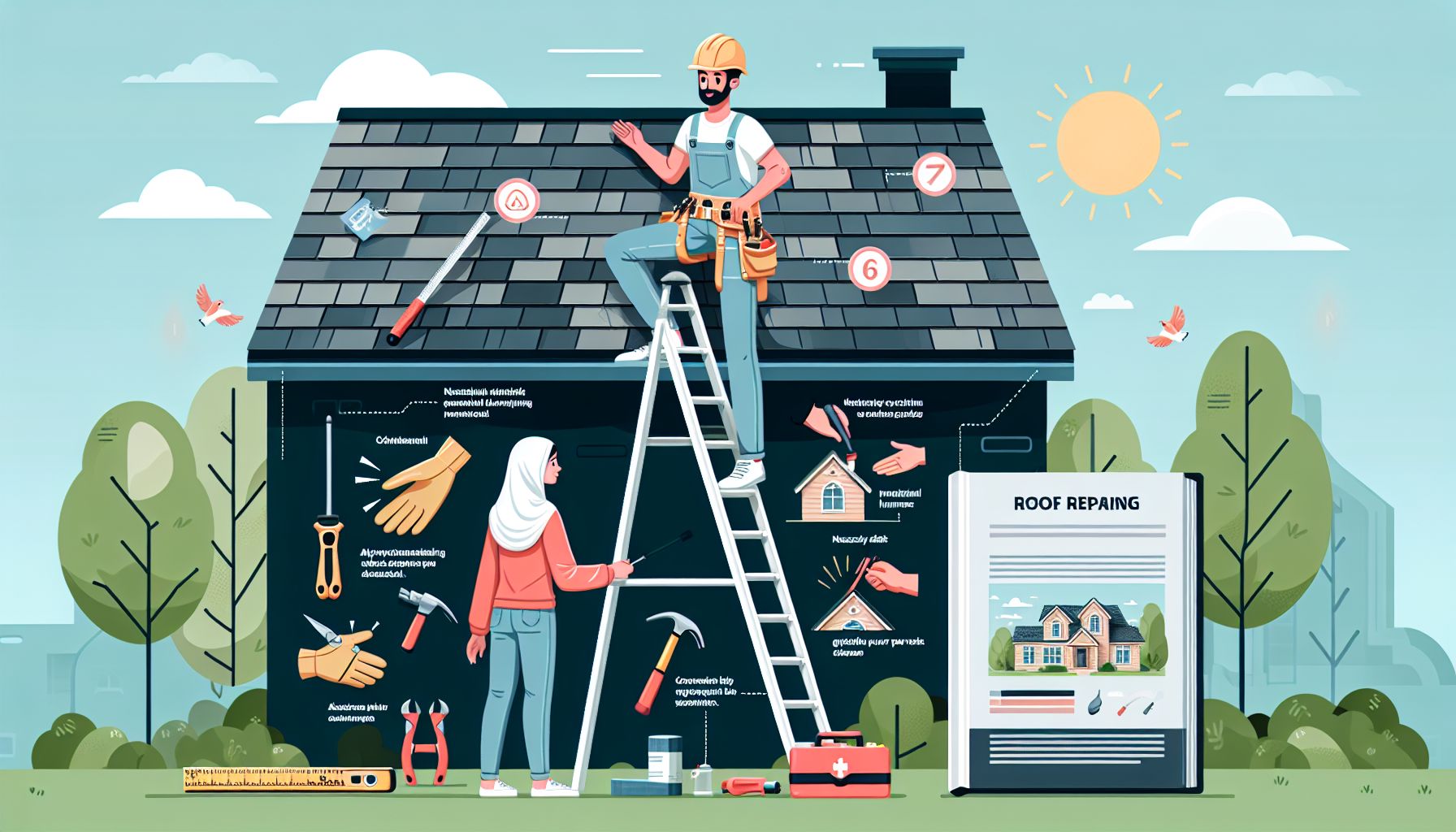Introduction
As a homeowner, maintaining the integrity of your roof is crucial to protect your investment and ensure the safety and comfort of your family. Unfortunately, over time, roofs can develop issues that require repair or even replacement. In this blog post, we will provide you with essential tips and insights on roof repair to help you make informed decisions, prolong the lifespan of your roof, and avoid unnecessary expenses.
Understanding the Signs of Roof Damage
Before delving into the specifics of roof repair, it is important to recognize the signs of roof damage that indicate potential issues. By identifying these signs early on, you can prevent further damage and the need for a full roof replacement. Here are some common signs to look out for:
-
Water Leaks: The presence of water stains on your ceiling or walls is a clear indication of a potential leak in your roof. Addressing this issue promptly can prevent further damage to the structure of your home.
-
Missing or Damaged Shingles: If you notice shingles that are curled, cracked, or fully missing, it is essential to take action. Damaged shingles can compromise the effectiveness of your roof in protecting against weather elements.
-
Mold or Algae Growth: The growth of mold or algae on your roof can be an indication of excess moisture or poor ventilation. These issues should be addressed promptly to avoid further damage.
-
Sagging or Dips: If you notice areas of your roof that appear to be sagging or have noticeable dips, it may indicate structural issues. Prompt roof repair is crucial to prevent potential collapse.
Roof Repair vs. Roof Replacement
When faced with roof damage, homeowners often wonder whether a repair will suffice or if a full roof replacement is necessary. While it ultimately depends on the severity of the damage, here are some general guidelines to help you make the right decision:
-
Repair: If the damage is limited to a small area and the majority of your roof is in good condition, a repair might be suitable. This option is typically more cost-effective and less time-consuming than a full roof replacement.
-
Replacement: If your roof suffers from widespread damage, is nearing the end of its lifespan, or has undergone multiple repairs in the past, a replacement may be the most viable long-term solution. Consult with a professional roofing contractor to assess the condition of your roof and determine the best course of action.
Hiring a Professional Roofing Contractor
Whether you require a roof repair or a full replacement, it is crucial to hire a professional roofing contractor for the job. Attempting to DIY or hiring an inexperienced contractor can lead to subpar results and potentially exacerbate the existing damages. Consider the following when selecting a roofing contractor:
-
Experience: Look for contractors with a proven track record and extensive experience in roof repair and replacement. This ensures they are well-versed in handling a variety of roofing materials and situations.
-
Credentials and Insurance: Verify that the contractor possesses the necessary licenses and insurance coverage. This protects both you and the workers in the event of accidents or property damage during the repair or replacement process.
-
References and Reviews: Request references from previous clients and read online reviews to gauge their reputation and customer satisfaction level. A reliable contractor will gladly provide references and have positive reviews from satisfied homeowners.
-
Detailed Contract: Prior to commencing the project, ensure that all terms, costs, materials, and project timelines are included in a detailed written contract. This will protect both parties and prevent any misunderstandings.
Preventive Measures for Long-Term Roof Maintenance
To minimize the chances of future roof damage and extend the lifespan of your roof, it is important to implement preventive measures. Here are some tips to keep your roof in optimal condition:
-
Regular Inspections: Schedule regular roof inspections, especially after extreme weather events, to detect any potential damage early on. Professional inspections can identify small issues before they become major problems.
-
Trim Overhanging Branches: Nearby trees with overhanging branches can cause damage to your roof during storms or high winds. Regularly trim these branches to prevent them from rubbing against the roof surface.
-
Clean Gutters: Clogged gutters can contribute to roof damage by causing water to back up and seep under shingles. Clean gutters at least twice a year to ensure proper drainage.
-
Proper Ventilation: Ensure your attic is properly ventilated as excessive heat and moisture can damage the roof’s structure. Consult a professional to assess the ventilation requirements of your specific roof.
Conclusion
Investing in regular roof maintenance and promptly addressing any signs of damage are pivotal to a homeowner’s responsibility. By understanding the signs of roof damage, making informed repair vs. replacement decisions, hiring professional roofing contractors, and implementing preventive measures, you can prolong the life of your roof and safeguard your household from potential structural damage and costly repairs. Remember, when it comes to roofs, prevention and proactive maintenance are key elements for long-term success.
